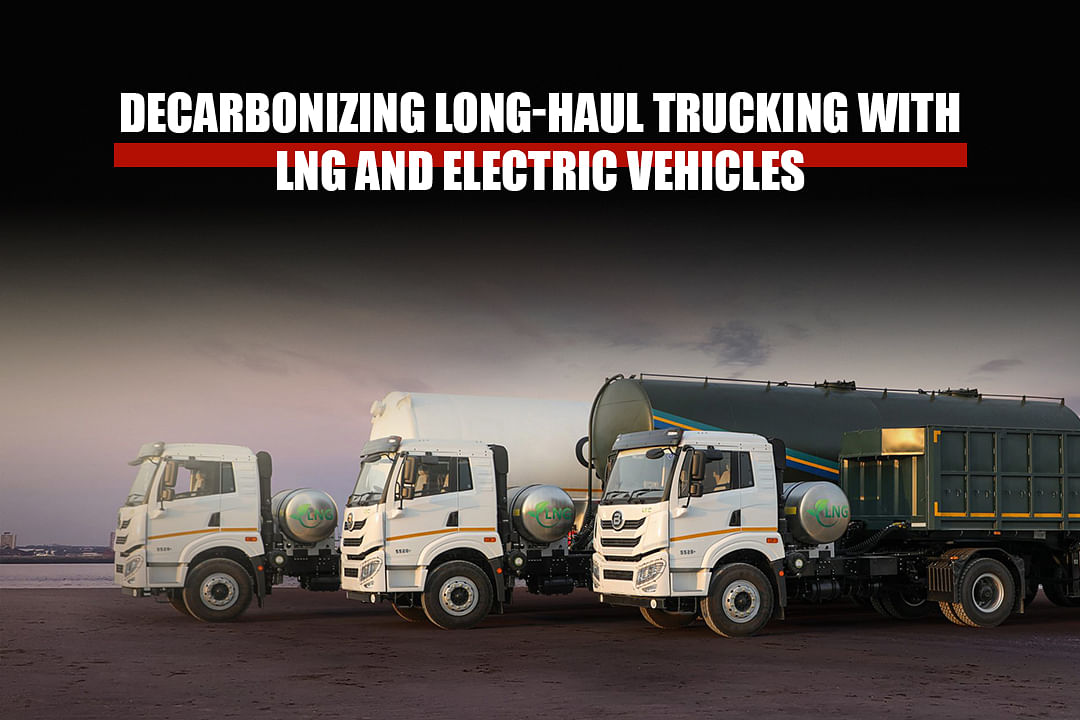India wants to reach net-zero emissions by 2070. To do that, it must cut emissions from long-haul trucking. Trucks move over 70% of India’s freight. But they also emit nearly 40% of road transport CO₂, says NITI Aayog.
To tackle this problem, India needs two strong, proven tools: LNG and electric vehicles (EVs). These technologies work best when used together.
LNG and EVs: Each Has a Role
LNG suits heavy-duty, long-distance hauling. It cuts CO₂ by up to 30% over diesel, says the International Energy Agency (IEA). It also lowers NOx and particulate matter,a win for health and climate.
EVs, by contrast, shine in short-range and city routes. They’re ideal for fleets that run on fixed schedules and have easy access to charging stations. Thanks to FAME II, over 11,000 electric buses and freight EVs are on the road today.
These paths don’t clash. They match different needs. Together, they form a balanced strategy for India’s freight sector. Urban and rural, light and heavy.
Real Impact
LNG trucks, like the Tata Prima G.55S LNG, are running across India as more fleet owners are choosing LNG for its low fuel cost, long range, and better TCO. 20 new LNG stations were opened in India last year. There could be 1,000 by 2030, said the Ministry of Petroleum and Natural Gas.
EVs are picking up speed in FMCG, e-commerce, and logistics. Organizations like Flipkart and Amazon India will go 100% electric for delivery vehicles. EVs are not limited to last-mile anymore. Some manufacturers now experiment with battery swaps, high-speed charging highways, and energy-as-a-service offerings. All of these advancements make EVs feasible for heavier, longer journeys.
Infrastructure and Policy: Make or Break

- Technology alone cannot fuel this transformation. India needs strong infrastructure, supportive enablers, and effective policies.
- Electric trucks, like the Tata Prima E.28K, receive support from the National Electric Mobility Mission and state policies for EVs. These promote charging stations, fleet incentives, and OEM investment.
- LNG gets backing too. The government supports it with tax cuts, green freight corridors, and station networks.
- Later, fuels like bio-CNG and green hydrogen may add value. But right now, LNG and EVs are the best tools, mature, ready, and scalable.
Conclusion
To decarbonize trucking, India must act now. We need fast innovation, new financing, and deep collaboration between fleets, tech firms, fuel providers, and the government.
This change won’t follow one straight road. It will take many small, smart steps. With LNG and EVs as twin engines, India can build a freight system that’s cleaner, stronger, and ready for tomorrow.
For more articles and news, stay updated with 91trucks. Subscribe to our YouTube channel and follow us on Facebook, Instagram, and Linkedin for the latest videos and updates from the automotive world!
Web Stories
Latest Trucks News
Categories
91trucks is a rapidly growing digital platform that offers the latest updates and comprehensive information about the commercial vehicle industry.
